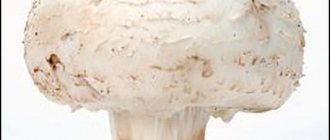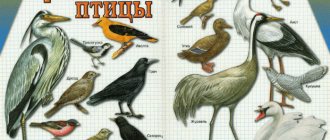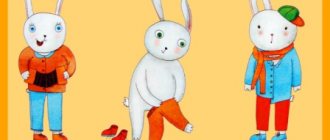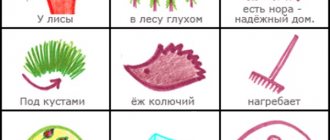Mnemonics for beginners is a system of various methods that helps to remember information using various associations and is used in teaching children from preschool age. This technique uses previously acquired knowledge to create a chain of connections. Thanks to such logical series, you can easily remember information that is difficult to perceive.
There are many mnemonic techniques. For example, Cicero’s method is based on spatial imagination, while Aivazovsky’s method works by training visual memory. Number sequences, foreign words or complex terms are easier to remember with the help of consonant or familiar words and numbers.
In a time when there was no written language, ancient priests and storytellers had to memorize enormous amounts of information. With the advent of the first texts put on paper, the art of using mnemonics did not lose its relevance, because the raw materials for writing them were very expensive. Even in Ancient Greece, notes were made using mnemonics. The art of associative memorization was mastered by the monks of the Middle Ages. At all times, people who could quickly remember and store useful and interesting knowledge in their heads were valued.
How does memory work in preschool children?
Before moving on to a description of the principle of using mnemonic tables, it is necessary to dwell on the features of memory development in preschoolers. First of all, it is important to say that in the majority of preschool children, figurative memory predominates (this can be visual, as well as auditory, olfactory and other images of perception). At the same time, children remember information mainly mechanically, involuntarily. That is, the child remembers what interests him or what makes a strong impression on him. Therefore, an unusual and bright form of presentation is very important. With the development of speech, children's ability to perceive words increases: a preschooler can memorize poetry, he easily remembers the plots of fairy tales and cartoons. However, according to psychological and pedagogical research, it is much easier for children to reproduce information if in the process they can rely on visual diagrams. In older preschool age, the child begins to form voluntary memory. With the development of the ability to self-control, the baby learns to independently remember information that may be useful to him. It is visual aids (diagrams, sketches, notes) that allow children to better remember the necessary material.
Preschool children have the most developed figurative memory, therefore, in order for the child to better remember any information, it is necessary to use various visual aids, including mnemonic tables.
Where and who will use mnemonics?
- For children - to remember information in school and kindergarten. Learning poetry with this technique is a pleasure for both children and parents.
- For students - to effectively pass the session and tests. It’s easy to repeat and remember the year’s material in a week! The main thing is to use techniques.
- For adults - at work, in making presentations, in planning things, making shopping lists and much more.
No talent or special abilities are needed to teach mnemonics. We need systematic, disciplined training. Have information you need to remember? Remember one of our exercises and put it into practice with your children.
What are mnemonic tables?
Mnemonic tables are diagrams consisting of sequentially arranged image-symbols in which the content of texts (fairy tales, poems, etc.) is encrypted. Thanks to them, the child can perceive information not only auditorily, but also through visual images. The formation of additional associations facilitates the memorization process and helps to reproduce learned material. Most often, mnemonic tables are used for memorizing poems, teaching retelling, composing stories, as well as for memorizing rules and various sequences. But memory development is not the only positive consequence of practicing using mnemonic tables. Children actively develop logic and imaginative thinking, attention, imagination, their vocabulary expands, and beautiful and coherent speech is formed.
It is best to introduce the baby to mnemonics in several stages according to the principle from simple to complex:
- A mnemonic square is a separate card with an object, action or phenomenon schematically depicted on it, in which one word is encrypted (for example, “cup”, “run” or “rain”).
- A mnemonic track is a combination of several linearly arranged mnemonic squares, which can be used to compose a phrase or sentence.
- A mnemonic table is a more complex design consisting of many mnemonic squares, which contains quite a lot of information.
The number of mnemonic squares that make up a track or table depends on the age and other individual characteristics of the child. For children 3-5 years old, small patterns containing 4-8 cells are suitable. With older preschoolers 5-7 years old, you can use tables of 8-16 squares. Mnemonic tables for children must be colorful and bright, so it will be easier for the child to concentrate his attention. For older children, black and white pictures are also suitable. It is important that the images are familiar and understandable to the baby.
When working with mnemonic tables, both hemispheres of the child’s brain are involved: the left, which is responsible for logic and sequential analysis of information, and the right, which is responsible for imaginative thinking and imagination.
From what age is it used?
Teaching children using mnemonics can begin from a very early age. Getting to know exercises for children starts with simple techniques.
First, they use mnemonic squares, which can be introduced to children at the age of three. In the first lessons, children study simple images that represent one word, phrase or simple phrase. You can place pictures in a square and learn poems with movements.
Later, at 4-5 years old, children become familiar with mnemonic tracks - systematized pictures of four drawings. With the help of such images, the concept of sequences is formed. Thanks to group illustrations, you can easily tell a short story, remember the steps of washing your hands, the process of dressing or washing your face.
Children aged 6-7 years begin to study mnemonic tables that allow them to perform more complex actions:
- retell various works;
- memorize poems and complex words;
- guess and make riddles;
- find rhymes for words;
- invent fairy tales or stories;
- distribute objects into groups according to certain characteristics;
- study numbers;
- become familiar with the basic rules of life safety and behavior in various places, and methods of self-service.
Children learn to express their thoughts correctly and beautifully and use new words in speech. Attention and intelligence develop, the ability to highlight the main thing and compare improves.
How to create a mnemonic table yourself?
When working with your little one, you can use both ready-made mnemonic tables and ones you make yourself. In order to make a table based on a poem or story, you need:
- Divide the text into fragments (the younger the child, the shorter).
- Draw squares on a piece of paper according to the number of text fragments.
- In each square, depict what is said in the fragment, or what is associated with it. A child of senior preschool age can independently draw pictures for the table.
- If you wish, you can sign the text in each square that you need to remember.
Definition
Mnemonics (mnemonics) is a list of methods and techniques that help remember various types of information.
Mnemonics is based on the principle of visualizing abstract objects, which are replaced by specific concepts or figurative definitions. To easily and quickly memorize the necessary information, you need to associatively associate it with some visual idea, sound image or sensation. Associations - establishing connections with known images and phenomena.
Examples of mnemonic tables for preschoolers
- Mnemonic tables for learning poems
To make it easier for your child to remember the poem, you can use mnemonic tables:
- Read the poem to your child with expression.
- Then you need to tell your child that now you will learn the verse by heart together. After this, read the text again, but at the same time pay little attention to the table.
- Discuss the content of the poem, its main idea.
- Find out whether all the words and pictures are clear to the child, explain their meaning.
- Read line by line and ask your child to repeat after you, based on the pictures.
- Then the baby can try to recite the poem on his own, looking at the mnemonic table.
- Learning to retell and compose a story based on a diagram
Preschool children, although they have a fairly extensive vocabulary, often have difficulty composing stories. Kids are easily distracted, confused, and lose the logic of their thoughts. Mnemonic tables help children plan a story and reproduce plot events in the correct order.
Mnemonics for children
Over the past few decades, this innovative direction in pedagogy and speech therapy has become popular. Kindergarten teachers began to pay more attention and time to speech development.
Classes are held in groups where children get acquainted with works of art, poetry, and fairy tales. It is especially useful to memorize poems and read them with expression. This trains memory, shapes speech, and enriches vocabulary.
Expressiveness of performance develops speech technique - diction, breathing. To do this, special exercises are carried out to help develop speech hearing and clear pronunciation of sounds and words. Also, the educational program of the preschool educational institution includes classes on mnemonics.
Mnemonics for schoolchildren
The modern student receives a huge amount of information on various disciplines every day. It is very difficult to remember the material received in such a volume. Mnemonics skills will help here, which make it possible to accumulate and retain information.
Mnemonics for memory development is a strong training of attention and thinking. The following techniques will help you remember the information received as much as possible:
- "Make up your own story" . How to remember a list of unrelated words? The simplest thing is to come up with a story. For example, vocabulary words starting with the letter “l”: – labyrinth – on the rides we got confused in the labyrinth; – laboratory - he secretly entered a secret laboratory; – lagoon – the blue lagoon sparkles with sunlight. Next, the student reads the resulting text and retells it. This way he remembers the right words.
- Association cards . This method of taking notes helps you remember what you read. The main topic is written in the center of the sheet, and then secondary topics branch off from it in different directions, like branches of a tree.
- Block diagram . This method helps to structure numbers, tables, symbols, and keywords. The arrows in the diagram indicate the relationship between various data.
- Another proven way to remember information is to try to rhyme it. It is necessary to compose several lines of the necessary information and rhyme them. This should create a short verse. Then repeat several times.
- BCC - alphanumeric code . The technique is used to encrypt numbers and digits into words.
Rules for conducting classes
The process of working and learning with children should be comfortable and beneficial.
- You need to start with simple tasks. First, you can look at cards with single images.
- You should not immediately overload your preschooler; he will quickly get tired and will not absorb the information. You can show no more than two mnemonic tables per day.
- All images of didactic material must be bright and colorful. Children quickly remember colorful images. The grass is green, the carrot is orange, the pine cone is brown, the sea is blue.
- It is worth changing the topic of the lesson every time, otherwise the child will lose interest. Today we are learning poetry. Tomorrow - a fairy tale, wild animals, etc.
- It is important that classes take place only in a playful way.
Development of fantasy
In preschool educational institutions (DOU), mnemonic tables can be used to develop thinking and imagination. You should start with simple signs that depict objects denoted by one word or phrase. There are 4 signs in total. Then the task becomes more complicated. The teacher should arrange the cards in the form of a square. Following the path of the square, children must compose a short story of two or three sentences. At first, you can ask children leading questions. Then we can offer mnemonic tables with the help of which a whole story is compiled. Also, using these tables you can simplify the task of memorizing a story or poem.
At first, the teacher compiles mnemonic tables. When children have sufficiently grasped the essence of mnemonics, they can begin to be introduced to the process of creating tables.






